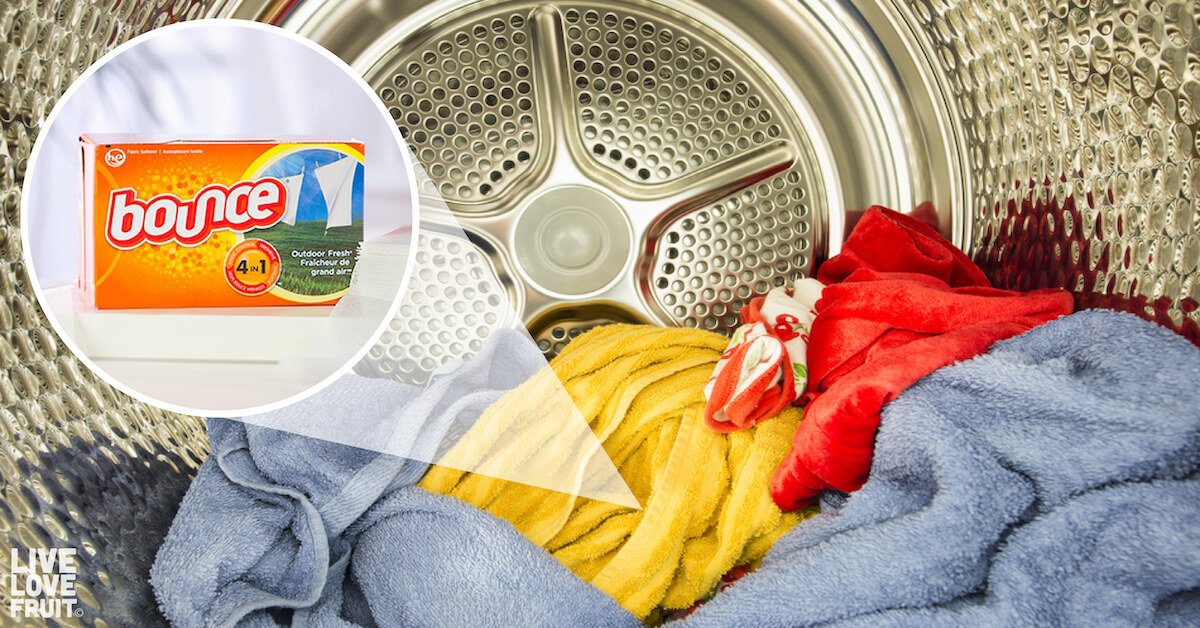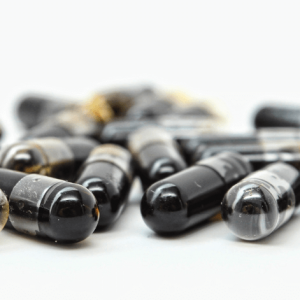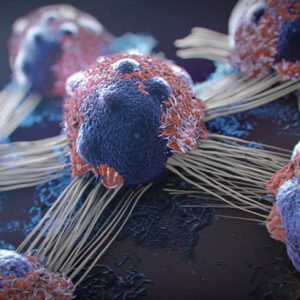We’re exposed to to hundreds of toxins everyday, and although we can’t remove every toxin, we can take steps to reduce our exposure. Sometimes it’s as easy as swapping out one item for another – and in this case, that’s dryer sheets.
Exposure to toxins, such as those found in toxic dryer sheets (and fabric softener), have been strongly linked with neurological diseases (neurotoxicity), hormone imbalances, respiratory problems and even cancer.
The Truth About Your Toxic Dryer Sheets
Unfortunately, there are no laws in place which require dryer sheet manufacturers to list chemicals used in their making. Sometimes you might see listed, “biodegradable cationic softeners”, which essentially means toxic chemicals that build up in our body and wreak havoc on our nervous system.
Studies have been done that looked at what chemicals were “released” by laundry products like dryer sheets. One study found that more than 25 volatile air pollutants (like carcinogens, acetaldehyde and benzene) are released from dryer sheets when heated.
“This is an interesting source of pollution because emissions from dryer vents are essentially unregulated,” said Dr. Steinemann, a professor of civil and environmental engineering and public affairs at the University of Washington. “If they’re coming out of a smokestack or tail pipe, they’re regulated, but if they’re coming out of a dryer vent, they’re not.”
In the 1990’s, the U.S. Environmental Protection Agency (EPA) and industry-generated Material Safety Data Sheets (MSDS) created the following list of chemicals found in common fabric softener:
1. Alpha-Terpineol: can cause headaches, loss of muscular control, central nervous system damage and respiratory problems.
2. Benzyl Alcohol: respiratory tract irritant, central nervous system depressant, death.
3. Camphor: causes central nervous disorders, confusion, and is easily absorbed through the skin.
4. Chloroform: a known carcinogenic neurotoxin.
5. Ethyl Acetate: a narcotic on the EPA’s “hazardous waste” list.
6. Linalool: causes central nervous system disorders, reduced spontaneous motor activity and depresses heart activity.
7. Pentane: harmful if inhaled, and cause cause headaches, nausea, dizziness, drowsiness, loss of consciousness and central nervous system depression.
8. Benzyl Acetate: has been linked to pancreatic cancer.
9. Limonene: a known carcinogen that irritates the eyes and skin.
10. Dichlorobenzene: extremely carcinogenic solvent used to make paint thinners.
11. Ethanol: on the EPA’s “hazardous waste” list – can cause central nervous system disorders.
The list above also doesn’t include fragrance chemicals, which alone contain thousands of compounds that weaken our immune, endocrine, respiratory, and neurological systems. Headaches and dizziness are common symptoms of being around certain fragrances. If you’re someone who often suffers from these symptoms, I challenge you to go scent-free for a week and discover the difference it can have on your entire body!
The Problem with Fragrance
The synthetic scents in dryer sheets and other fragranced products are so bad that they’re even being called the new second-hand smoke. This is fair, given about 95 percent of chemicals used in synthetic fragrances are derived from petroleum (crude oil). These toxic chemicals are linked to cancer, birth defects, central nervous system disorders and allergic reactions.
Unfortunately, the US Food and Drug Administration (FDA) nor the Consumer Product Safety Commission require individual fragrance ingredients to be listed on labels or MSDS (source). So really, there is no way for you to know if any of these agents are present. Even “green” products have been found to be just as toxic as conventional dryer sheets (likely because they still use fragrance).
So while many toxic dryer sheets will come with harmful compounds like methanol, butane, pentane, linalool, limonene, benzyl acetate, camphor, chloroform, A-terpinol, and others, you will never see them listed on product labels (source). And if you think that these chemicals don’t off-gas enough to cause bodily harm – think again. Many are proving to be more dangerous at lower levels than higher levels, which contribute to the ever-growing toxic loads our bodies are subject against.
The worst part? The chemicals incorporated into fabric softeners and dryer sheets are engineered to last. That’s why you can smell fragrance on clothes for weeks at a time.
I’ve personally been fragrance-free for about 7-8 years, and since I thrift a lot of my clothes, I often come home carrying fragrance-ladened clothing items. Thankfully, baking soda does the trick! All you need to do is soak the clothes in 1-2 cups of baking soda and a gallon or so of water overnight, and then wash as you normally would. On the rinse cycle, you can also add a cup of vinegar. Leaving the clothes out to dry in the sun also helps eliminate fragrance particles. Some fragrance is so strong that I need to repeat this process 3-4 times until all fragrance is gone (yeesh!).
Other Dryer Sheet Dangers
Most people don’t think about the effect that dryer sheets and fabric softeners have on indoor air quality. If we’re pumping these chemicals through our dryer day in, day out, they’re entering our homes, and our bodies.
By contributing to indoor air pollution, dryer sheets can exacerbate allergies and weaken lung function. One study found that the fumes from dryer sheets cause irritation of the throat, eyes, nose and lungs. Now imagine that being a constant in your home. It’s no wonder so many people have “mysterious” chronic health problems!
Aside from trading out your dryer sheets and fabric softener for more eco-friendly options mentioned below, you can also invest in an indoor air purifier like the Intellipure Compact Air Purifier. The product’s unique patented DFS technology is specially designed to deal with ultrafine particles and medium to high gas and odor adsorption.
The compact air purifier can purify a room of up to 500 square feet. The larger machine (the Ultrafine 468), can purify areas of up to 1000 square feet! You can place them anywhere in your home to capture gases and 99.99% of microscopic allergens (like fungi molds, viruses and bacteria) and pollutants that may otherwise get trapped in your home.
I am currently offering an exclusive discount to my readers in collaboration with Intellipure! Simply use the code LIVELOVEFRUIT at checkout to receive 10% off your order!
5 Natural Alternatives To Dryer Sheets
There are so many alternatives to dryer sheets, most of which will save you money, and make sure your home and clothes aren’t infused with toxic fumes.
The below methods will ensure your clothes are static-free (and toxic-free!):
Method 1: Add 1/4 cup (or less) of vinegar to your laundry wash cycle, or add 1/4 cup vinegar to the rinse cycle.
Method 2: Some “green” fabric softeners like those made by Mrs. Meyers are safe to use, as long as you choose the options that are fragrance-free (the Clean Day dryer sheets by Mrs. Meyers only use essential oils for their fragrance). If you do not have those brands, look for brands made with vegetable-based surfactants, salt and natural scents.
Method 3: Choose clothing made from natural fibres, which don’t get static cling as readily as synthetic fibres.
Method 4: Shake out your clothes after removing them from the dryer. Surprisingly, this will get rid of static.
Method 5: If your clothes are already clean, use a metal hanger to brush inside the garment when it is already being worn.
Method 6: Purchase a pair of eco-friendly, non-scented, fabric dryer sheets by the company PurEcosheet. Their product lasts hundreds of loads, and I have personally been using the same two fabric sheets for years on end (Bonus: they’re cheap!).










Unfortunately Mrs. Meyer’s also includes fragrance in their ingredient list. I have moved away from all of their products.
Hey Christie! You’re right – I should have specified. I cleaned up the text there. Mrs. Meyers has a Clean Days fabric sheet box that uses only essential oils for their fragrance.
Awesome! I am enjoying your articles and the education you post.
I am starting to see so many big name companies say they are using essential oils in their products now and it makes me a bit skeptical. I know not all essential oils are created equal and I wonder if they are using pure essential oils, just the floral water you get after distillation or oils that have additives in them.
Hey Christie – good question. I also wonder the same. I wouldn’t imagine they are very high quality, because most of the bigger companies just care about fast production for mass yields 🙁
I was with you until you mentioned Mrs. Meyers products. They are not clean either. Run them through the Environmental Working Group product website.
Hey Deb – I also would not recommend many of Mrs. Meyers products, but their dryer sheets do not contain anything harmful. If you have another dryer sheet brand you’d like to recommend, I’d gladly replace it, but from my research, this was the cleanest dryer sheet product I could find (and again, the best substitution for people who want to use dryer sheets still).
These chemicals coat your clothes.
People that repair dryers, call dryer sheets “Dryer Killers”.
So true!
Are unscented dryer sheets ok or still toxic?
I’d avoid, but they are better than scented.